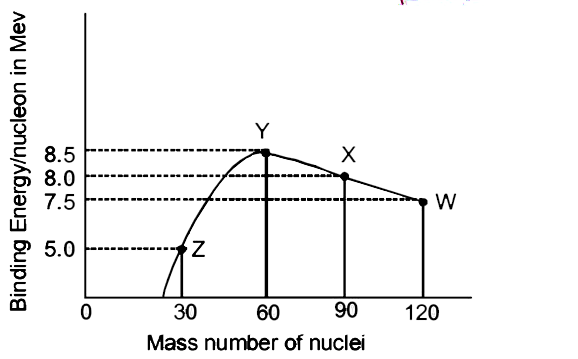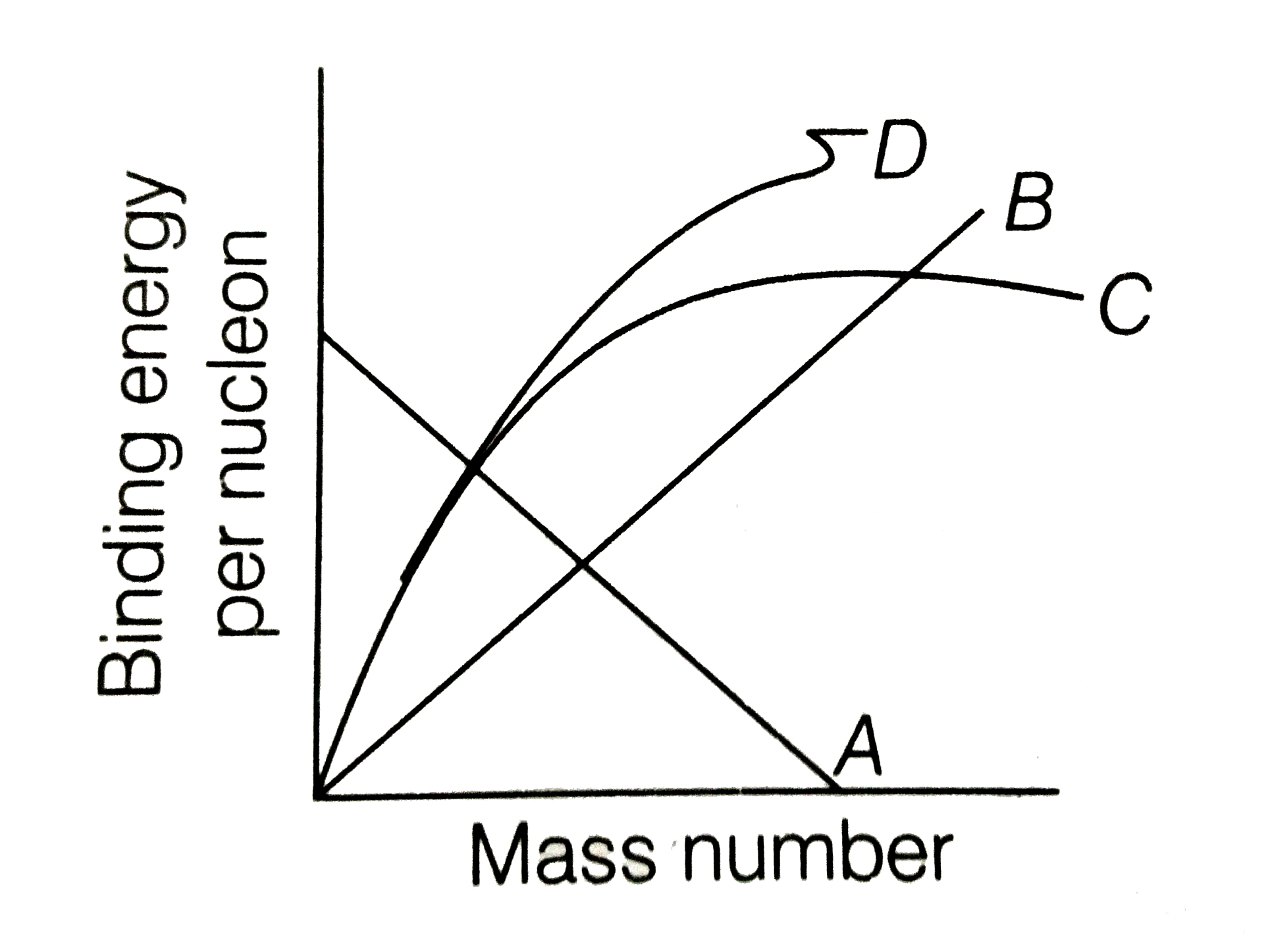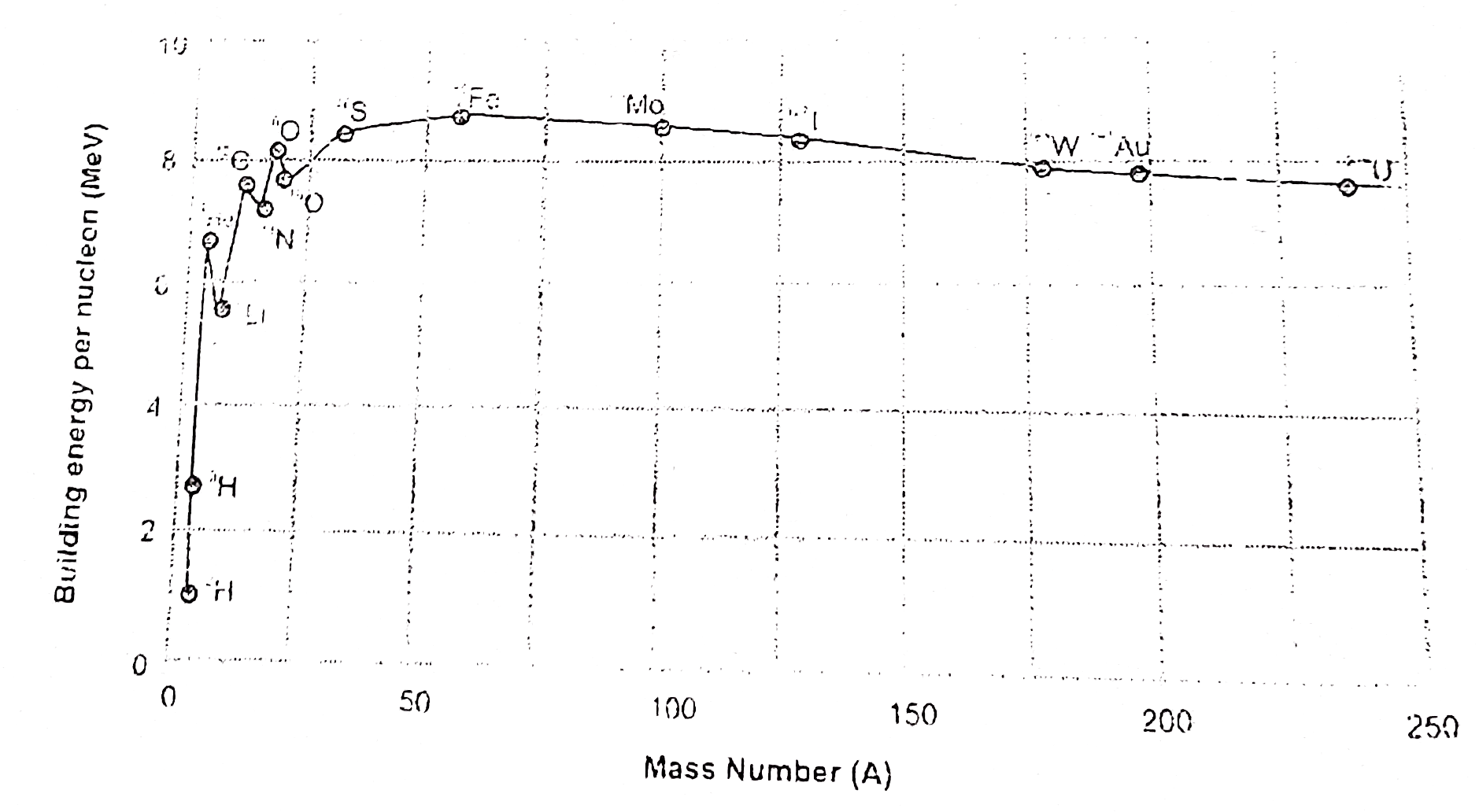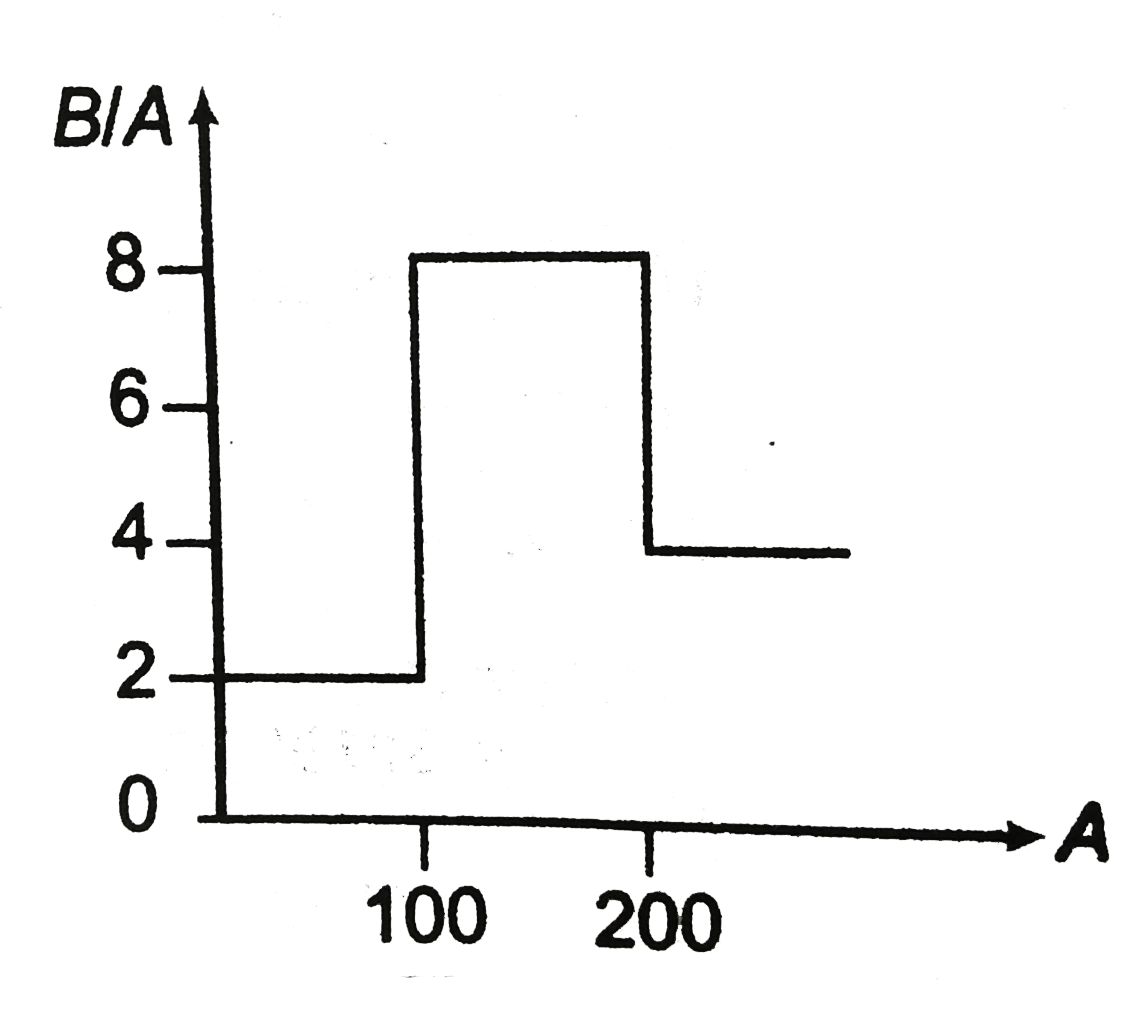Binding energy per vs mass curve for nucleus is shown in the figure W,X,Yand Z are four nuclei indicated on the curve . The process that would rease energy is

Y→2Z
W→X+Z
W→2Y
X→Y+Z
The correct Answer is:C
KEY CONCEPT: Energy is released when stability increases . This will happen when binding energy per nucleon increases
Reactant
Reaction(a) 60×8.5MeV=510MeV
Reaction(b) 120×7.5=900MeV MeV<br>Reaction(c)120 xx 7.5 = 900 MeVMeV
Reaction(d) 90×8=720
Product
2×30×5=300MeV
(90)×8+30×5)=870MeV
2×60×8.5=1020MeV
(60×85+30×5)=600MeV
Topper's Solved these Questions
- MODERN PHYSICSBOOK - SUNIL BATRA (41 YEARS IITJEE PHYSICS)CHAPTER - MODERN PHYSICSEXERCISE - MCQ (One Correct Answer
1 Videos
- ELECTROSTATICSBOOK - SUNIL BATRA (41 YEARS IITJEE PHYSICS)CHAPTER - ELECTROSTATICSEXERCISE - Comprehension Based Questions
2 Videos
- MOVING CHARGES AND MAGNETISMBOOK - SUNIL BATRA (41 YEARS IITJEE PHYSICS)CHAPTER - MOVING CHARGES AND MAGNETISMEXERCISE - MCQs(d )
1 Videos
Similar Questions
Binding energy per nucleon plot against the mass number for stable nuclei is show in the figure. Which curve is correct ?

View SolutionDraw the graph showing thervariation of binding energy per nucleon with mass number. Give therason for the decrease of binding energy per nucleon for nuclei with high mass numbers.

The binding energy per nucleon for nuclei with high mass number is low due to the large coulomb repulsion between the protons inside these nuclei.
View Solution
Knowledge Check
Assume that the nucles binding energy per nucleus(B/A) versus mass number (A) is as shown in the figure Use this plate to choose the energy the correct (s) given below
 Afusion of two nucleus with mass number typing in the range of 1<A<50 will release energyBfusion of two nucleus with mass number typing in the range of 51<A<100 will release energyCfusion of a nucleus typing in the mass of100<A<200 will release energy when broken into two equal fragmentsDfusion of a nucleus typing in the mass range of200<A<260 will release energy when broken into two equal fragments
Afusion of two nucleus with mass number typing in the range of 1<A<50 will release energyBfusion of two nucleus with mass number typing in the range of 51<A<100 will release energyCfusion of a nucleus typing in the mass of100<A<200 will release energy when broken into two equal fragmentsDfusion of a nucleus typing in the mass range of200<A<260 will release energy when broken into two equal fragmentsBinding energy per nucleon curve as a function of atomic mass number has a sharp peak for helium nucleus.
we can conclude from this that helium nucleusAis very stableBis radioactiveCcan easily be broken upDCan be used as fissionable materialAssertion : In a nuclear process energy is released if total binding energy of daughter nuclei is more than the total binding energy of parent nuclei.
Reason: If energy is released then total mass of daughter nuclei is less than the total mass of parent nuclei.A(a) If both Assertion and Reason are true and Reason is correct explanation of the Assertion.B(b) If both Assertion and Reason are true but Reason is not the correct explanation of Assertion.C(c) If Assertion is true, but the Reason is false.D(d) If Assertion is false but the Reason is true.
P-V graph of a cyclic process is as shown in the figure.Then its correct T-V curve would be
View SolutionAssume that the nuclear binding energy per nucleon (B/A) versus mass number (A) is as shown in figure. Use this plot to choose the correct choice(s) given below.
(a) Fusion of two nuclei with mass numbers, lying in the range of 1<A<50 will release energy.
Fusion of two nuclei with mass numbers lying in the range of 51<A<100 will release energy.
(c) Fission of a nucleus lying in the mass range of 100<A<200 will release energy when broken into two equal fragements.
(d) Fission of a nucleus lying in the mass range of 200<A<260 will release energy when broken into two equal fragments.

View SolutionThe binding energy per nucleon of a heavier nucleus is 6.8 MeV and binding energy per nucleon for the intermediate mass is 8.0 MeV during a nuclear fission. If the total number of nucleons is 270, what is the energy released during one fission?
View SolutionThe binding energy per nucleon, for nuclei with atomic mass number A>100, decreases with A.
The nuclear forces are weak for heavier nuclei.
View SolutionAssertion: If a heavy nucleus is split into two medium sized parts, each of new nucleus will have more binding energy per nucleon than original nucleus.
Reason : Joining two light nuclei together to give a single nucleus of medium size means more binding energy per necleon in new nucleus.
View Solution
